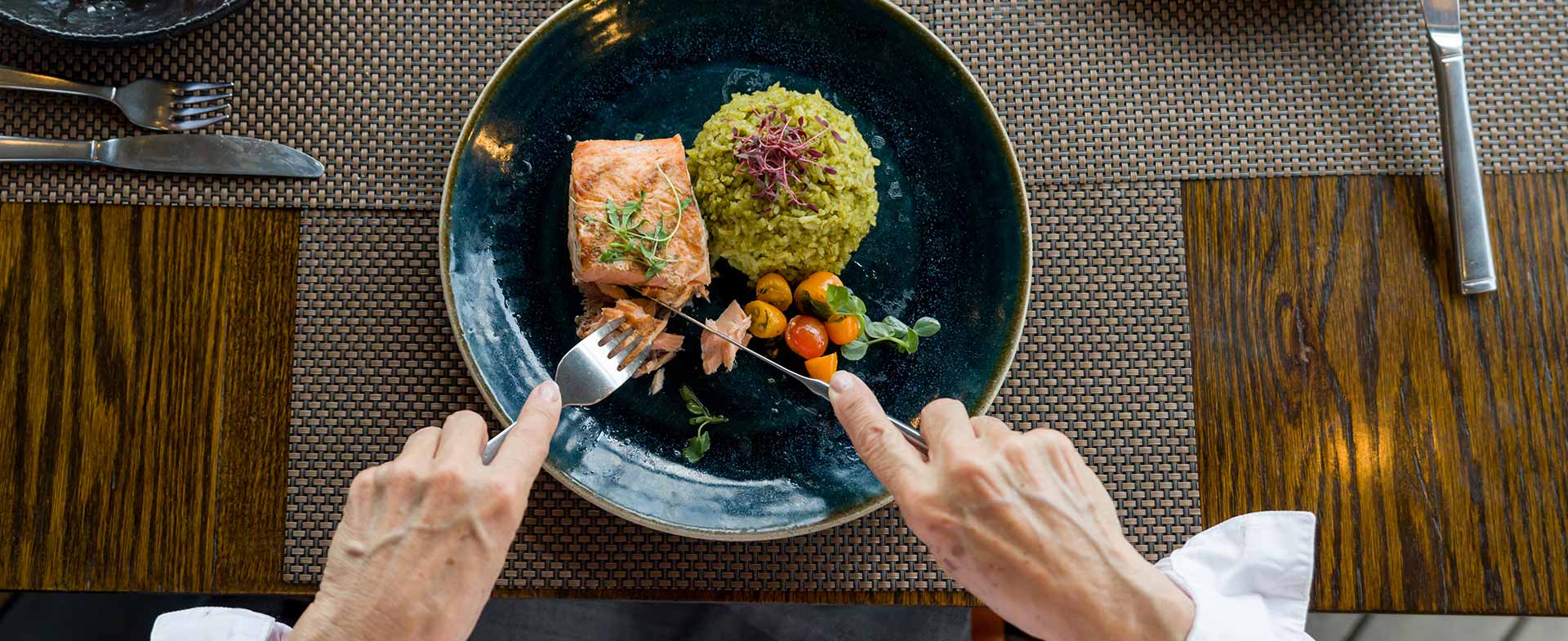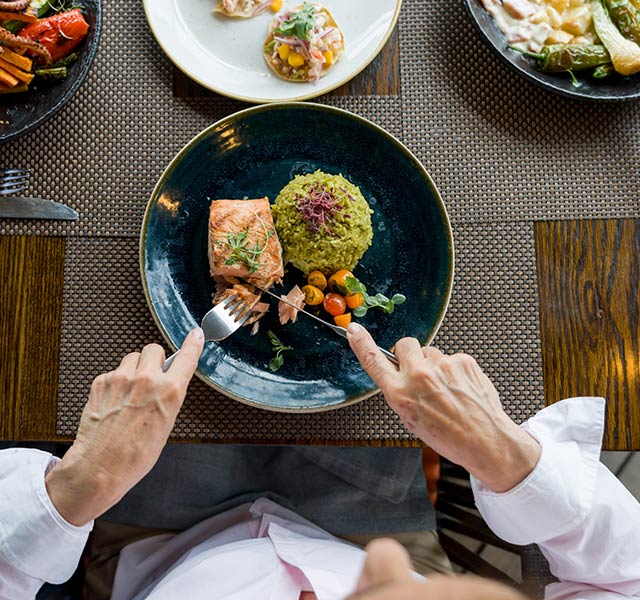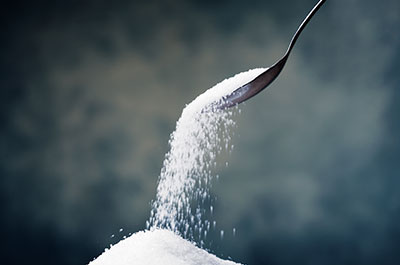If you’ve had a stroke or a transient ischemic attack (TIA), your chances of having another stroke go up. But you have the power to lower your risk of a second stroke—and it starts with what you put on your plate.\
Changing your eating habits is one of the most effective ways to prevent future strokes or TIAs. And you don’t have to follow an extreme diet to see results. A few food swaps and habit changes can make a big difference, says Maria Conley, RDN, a dietitian nutritionist at the Henry Ford Center for Integrative Medicine.
Creating Your Stroke Prevention Diet
Diet changes can seem daunting, but you can make some small changes—starting today—to get on the path to a healthier you. Conley recommends:
1. Eat more unpackaged foods.
Foods that come in a package—crackers, granola bars and chips—are often high in sugar, artificial sweeteners, salt or saturated fat. They also tend to be lower in vitamins and minerals. Together, these factors mean packaged foods aren’t the best option for boosting your heart and blood vessel health.
“Sugar, salt and saturated fat can lead to higher blood pressure, unhealthy cholesterol levels and type 2 diabetes,” says Conley. “These conditions raise your risk of having another stroke.”
Instead of packaged foods, choose whole foods closer to their natural state. Good options are fresh fruits, vegetables, nuts and legumes like beans, hummus or lentils. Work towards this goal each day with small changes to your snacks and meals.
“Instead of a snack bar, eat a banana or an apple,” suggests Conley. “Try carrots with hummus instead of chips or a serving of nuts instead of crackers. At meals, fill most of your plate with fruits and vegetables before you add other foods.”
And there’s another plus to eating whole foods: They contain antioxidants. These nutrients fight off free radicals, molecules that can damage your blood vessels and raise your risk of a future stroke.
2. Swap refined grains for whole grains.
White rice, bread and pasta are refined, processed grains without the bran and germ. Without these two parts of the grain, you’re missing out on fiber—a nutrient that can lower your stroke risk.
“Getting plenty of fiber can improve your cholesterol levels, which is a key factor in heart attack and stroke prevention,” explains Conley. “Fiber also helps you feel full, so it could help aid weight loss.”
You can add more high-fiber, whole-grain options into your diet by eating:
- Brown rice instead of white rice
- Oatmeal or quinoa instead of sugary or low-fiber breakfast cereal
- Whole grain bread instead of white bread
- Whole wheat pasta instead of white pasta
3. Eat at home more often.
Eating out means you have less control over what’s in your food. And in most cases, restaurant food is focused on being tasty, not heart-healthy.
“Restaurant meals often have high amounts of salt, sugar and fat,” Conley says. “When you make your food at home, you can make customized meals that meet your healthy eating goals.”
Cooking at home doesn’t have to be complex. Toss whole-grain pasta with vegetables and a dash of olive oil to replace a take-out Italian meal. Craving a burger? Try a lean turkey burger without salt on a whole grain bun to slash saturated fat and sodium.
4. Drink more water.

After a stroke, focus on drinking water—not sodas, sweetened coffee drinks or juices. “Consuming excess sugar can lead to type 2 diabetes, which raises your risk of clots in your blood vessels,” says Conley. “Soda, sweetened coffees and juices are a major source of sugar in the average American diet.”
Avoiding diet sodas is also a good idea, because artificial sweeteners are super sweet, training your palate to want even more sweet stuff. “Cutting back on sugary or sweetened drinks can be challenging, but it’s possible,” says Conley. “You don’t have to go cold turkey. Replace one of these drinks per day with water and increase gradually from there.”
You can also benefit from cutting back on alcohol. Drinking too much alcohol can raise your blood pressure and triglyceride levels, raising your stroke and heart disease risk. And though red wine has a reputation as a healthy alcoholic option, there’s no science to prove that it’s good for your heart.
Progress, Not Perfection
Changing your diet takes time and practice, so be forgiving of yourself as you learn how to adopt new eating habits. “Don’t focus on finding the perfect diet or doing everything right all the time,” says Conley. “Everyone has setbacks or days when their healthy diet didn’t go as planned. That’s okay. Start again tomorrow.”
Finally, be realistic with your goals, and create a plan that fits your tastes and lifestyle. “You can lower your risk of another stroke without extreme or highly restrictive eating plans,” says Conley. “Start with one or two areas of your diet that you want to improve. After you’ve mastered those changes, move on to another change. Before you know it, eating healthier will be a habit.”
If the idea of changing your diet after a stroke feels overwhelming, don’t try to do it alone. Talk with your primary care provider or cardiologist about seeing a registered dietitian. They can guide you toward doable heart-healthy changes and provide the support you need to stick to them.
Reviewed by Maria Conley, RDN, a dietitian who works with lifestyle and functional medicine patients as part of the Center for Integrative Medicine.



